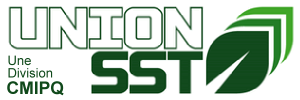Union SST - Frequently Asked Questions
What is the main responsibility of an employer in occupational health and safety? The employer has a legal obligation to ensure the health and safety of its workers. This includes hazard identification, implementation of preventive measures, employee training and access to appropriate personal protective equipment.
What are the consequences for an employer who does not comply with its OSH obligations? Failure to meet OHS standards can result in fines, legal action, licence suspension or revocation, and a bad reputation for the company.
What is a certificate of membership in a mutual prevention? It is an official document that certifies that your company is a member of a prevention mutual and that it engages in a proactive approach to improve health and safety at work.
What are the benefits of having a membership certificate? This certificate can give you preferential rates on your insurance, access to specialized prevention services and demonstrate your commitment to OHS to your employees, customers and partners.
What is PPE and when should it be used? PPE is any equipment intended to be worn or held by a worker to protect him from one or more risks that may threaten his health or safety. It should be used when collective prevention measures are not sufficient to eliminate or control risks.
Who is responsible for providing PPE? The employer must provide PPE for each task and ensure that it is use correctly.
What is WHMIS? Workplace Hazardous Materials Information System (WHMIS) is a set of rules to protect workers exposed to hazardous chemicals by providing them with information on the risks associated with these products and the preventive measures to be taken.
What are the employer’s obligations under WHMIS? Employers must, among other things, classify hazardous products, label containers, prepare safety data sheets and train workers.
What are the emergency measures to be taken in companies? Emergency measures may vary depending on the company’s activities but generally include evacuation plans, fire response procedures, hazardous product leakage or accident response procedures, and the designation of contacts.
How to test the effectiveness of an emergency plan? It is recommended that evacuation drills be conducted regularly to verify the effectiveness of the plan and ensure employees know what to do in an emergency.
How should an incident or accident at work be reported? Workplace incidents and accidents must be reported to the employer as soon as possible. An incident report must be completed and analyzed to identify the causes and implement corrective actions.
What is the point of following up after an incident or accident? Follow-up ensures that corrective actions have been implemented and that a similar incident does not occur again.
How often should preventive maintenance, inspections and OSH committee meetings be conducted? The frequency of these activities depends on the nature of the risks present in the business and it is recommended that they be planned and documented.
What is the role of a health and safety committee? The role of the OHS committee is to advise the employer on occupational health and safety issues, participate in risk analysis and propose improvements.
